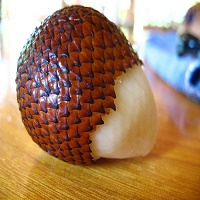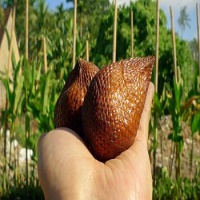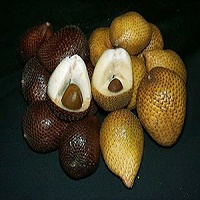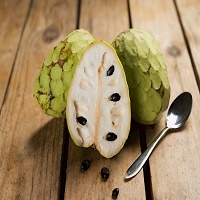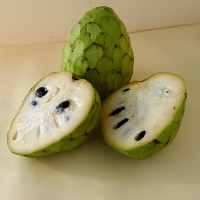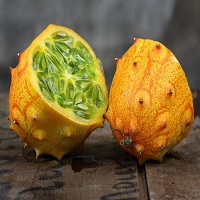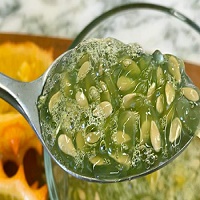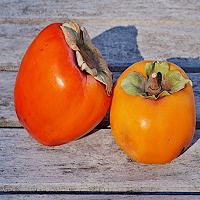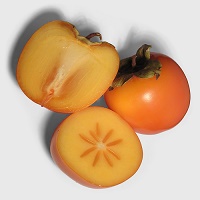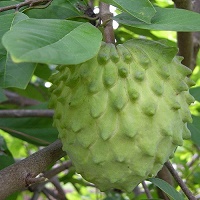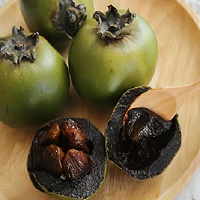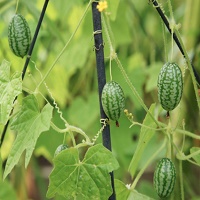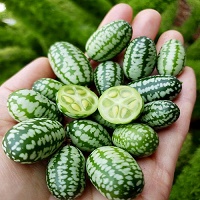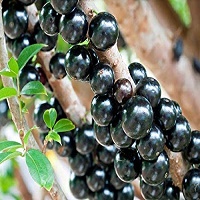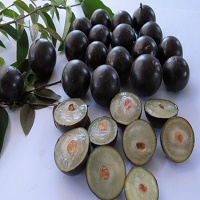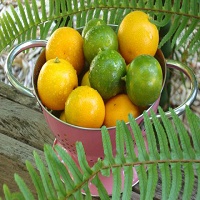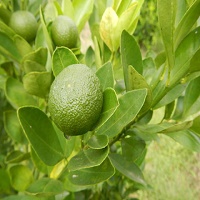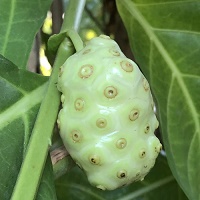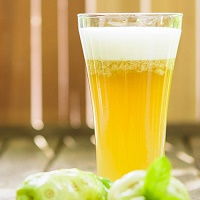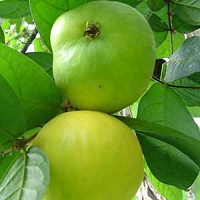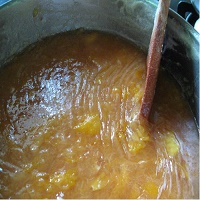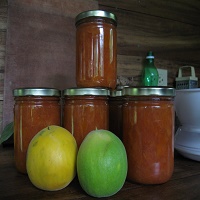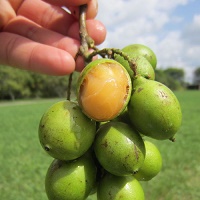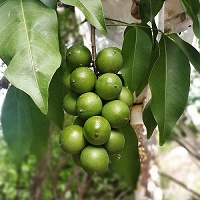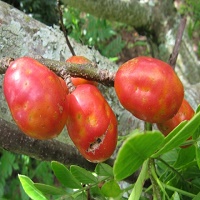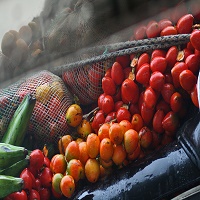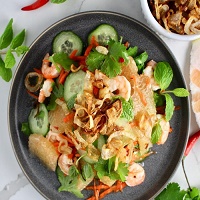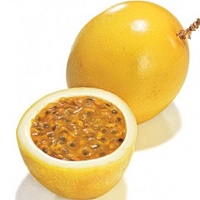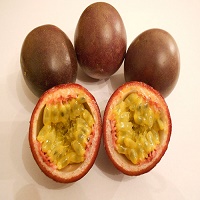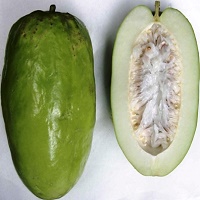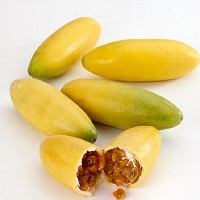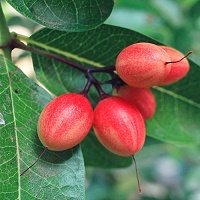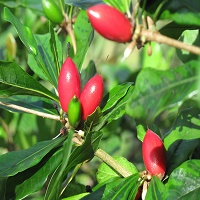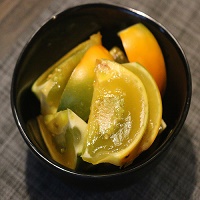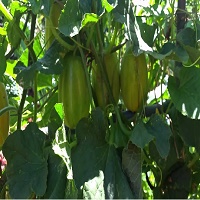Top Benefit Nutrition Fruits 80-60
There are more than 2000 fruits, but each one has unique features and health benefits. Fruits are consumed by everyone on a daily basis. But how many of us know the health benefits of fruits? So this site provides you health benefits and characteristics of different fruits.
 Full List of Fruits
Full List of Fruits  Top Benefit Nutrition Fruits 80-60
Top Benefit Nutrition Fruits 80-60
80. Snake fruit
79. Cherimoya
78.African Cucumber
77.Fuyu Persimmon
76.Atemoya
75.Black Sapote
74.Cucamelon
73.Jabuticaba
72.Calamansi Lime
71. Noni Fruit
70.Araza
69.Spanish Lime
68.Ciruela
67.Cupuacu
66.Peach Palm
65.Pomelo
64.Passion Fruit
63.Miracle fruit
62.Lulo
61.Korean Melon
More technically known as salak or salacca zalacca, is native to Indonesia but is now grown and produced around southeast Asia. The fruit grows on the salak palm tree, sprouting off the base of the palm in little clusters. In Thailand, snake fruit is widespread, popular as a to-go snack on the streets of Bangkok (during season). Venders will often handle the dirty work, peeling the spiky exterior and packing the peeled fruit into convenient baggies for sale. Thais enjoy snakefruit dipped in a mixture of sugar and salt. The plants have large spiked stems and leaves, which can grow up to six meters long.
Description
Snake fruit also known as Salak fruit. Snake fruit is similar in size and shape to a fig, with a bulbous body that tapers to a point at one end. The fruit is encased in shiny, dark to light reddish-brown scales, which are sometimes covered in tiny spikes. Though it is scaly and prickly, and may look tough, the skin is actually quite thin and can be easily peeled off by breaking the tip. Underneath the snake-like skin lies three white or light yellow lobes of juicy pulp that look similar to large peeled cloves of garlic, with hard, flat, dark brown, inedible seeds inside. The pulp has a garlic or apple-like crunch, though some varieties can be drier and have a flaky texture, while others are more spongy and succulent. Salak fruits mature five to seven months after pollination.
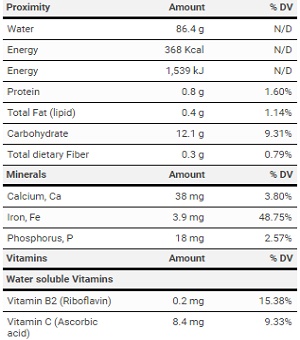
Snake fruit is called the Fruit of Memory in Indonesia because it is rich in potassium and pectin, both important nutrients for brain health and development. It also contains nutrients like thiamine, iron, and calcium, as well as vitamin C. Snake fruit is known for its antidiarrheal properties, which is why some people warn against eating too much of the fruit so that you don't interrupt your regularity.
Types of snake fruit
- Salak Yogyakarta
- Salak Bali
- Salak Gula Pasir
Nutritional value of Salak Fruit Serving Size: 100 g
Health Benefits

- Fights Cancer
- The beta-carotene in Salak is a powerful antioxidant and works well to prevent cardiovascular disease, strokes and even cancer.
- Consumption of Salak is good for young pregnant women who experience morning sickness.
- Due to high fiber and antioxidant content, Salak is a sought-after diet for weight management diets.
- Salak consists of calcium and carbohydrates it provides necessary energy and stamina to the body while on diet.
- Its tea is a wonderful astringent that is beneficial in reducing weight.
- Antioxidants help in fighting damage to the cells and tissues and prevent the body from harmful carcinogenic damage.
- Regular consumption of a portion of Salak in your diet helps to reduce the risk of hemorrhoid formation.
- Controls blood sugar level
- Memory Booster
- Cure Nearsightedness
- Promote Overall Body Health
Recipe
- Salak cracker: Fruit flesh very finely sliced up and after that place in freezer for around one or two hours prior to being fried using a unique tool. Salak cracker is utilized like a tasty snack whenever you're relaxing.
- Salak sweets: Materials required are just sugar, boiled water, just a little salt, and also fruits within their nations. A step to make it is very simple, simply by combining all of the ingredients which have been prepared within a container. After that let stand for about 1 week. Salak sweet is just about to serve.
- Salak pickles: For making salak pickles, prepare elements just like water, whiting, red chili paste, a half tablespoon of salt, sugar, vinegar along with a tablespoon of food. Steps to make it, very first peel off the salak and also split in two and take away seeds. After that, soak within a solution of water and salt. Leave for just one hour, wash and also drain.
Then soak the salak once again to the solution of water as well as whiting about 1 hour, wash and also drain. Then enter in the salak again towards the solution of water in addition to the vinegar and salt which has been boiled and cooled before. Let stand for one to two nights. Salak pickles are prepared to be enjoyed.
How to consume
- Fresh unripe fruit sarcotesta are used in a spicy fruit rujak.
- Unripe, young fruit sarcotesta are consumed as pickles.
- Sarcotesta from fruits of inferior quality are occasionally cooked with salt.
- Salak fruit is now being developed into fruit juice, pickle and other food products.
- Seed kernels of the young fruits of the Javanese cultivar 'Pondoh' are edible.
Closely-planted row of salak palms forms an impregnable hedge and the very spiny leaves are also used to construct fences.Bark of the petioles may be used for matting. Leaflets are used for thatching.
Native to the valleys of Bolivia, Colombia and Ecuador—and subsequently grown in Chile and Peru—this oval fruit can weigh up to 5 pounds and consists of a smooth, green skin and plump white inside that's pitted with dark brown seeds (which are not edible). Its flesh is juicy and fragrant, with a custard-like consistency that is said to taste like a mix of banana, passion fruit, papaya and pineapple. It can be cut in half, scooped out and eaten raw, used in salads, puréed and made into mousse, folded into a pie or tart filling, or frozen and eaten like ice cream.
Description
Cherimoya is a deciduous or semi-evergreen shrub or small tree reaching 9 m (30 feet) tall. The flowers are produced in small clusters, each flower 2–3 cm across, with six petals, yellow-brown, often spotted purple at the base.
The fruit is oval, often slightly oblate, 10–20 cm long and 7–10 cm in diameter, with a smooth or slightly tuberculated skin. The fruit flesh is white and creamy, and has numerous dark brown seeds embedded in it. When ripe, the skin is green and gives slightly to pressure. Some characterize the fruit flavor as a blend of banana, pineapple, papaya, peach, and strawberry. The fruit can be chilled and eaten with a spoon, which has earned it another nickname, the ice cream fruit.

- Bays
- Big Sister
- Booth
- Chaffey
- Ecuador
- El Bumbpo
- Honeyhart
- Knight
- Libby
- McPherson
- Nata
- Ott
- Pierce
- Sabor
- Whaley
- White
Health Benefits
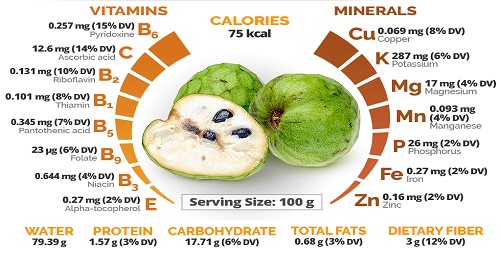
- Cardiovascular Benefits
- Boosts Immunity
- Good for your bones
- Promotes digestive health
- Good for diabetics
- Delay the signs of ageing
- Prevents Cancer
- Aids in weight loss
- Promotes the growth of healthy hair
- Fights Free Radicals
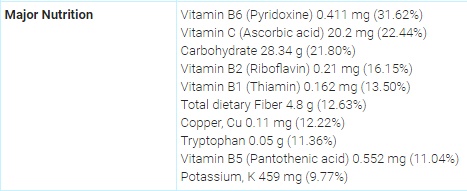
Cherimoya Tart
Ingredients:
- 6 Key limes
- 1/2 cup sugar
- 1 package (14 ounces) butter puff pastry, thawed according to package directions
- 1 egg, lightly beaten
- 2 cherimoyas (1 to 1 1/4 pounds)
- 8 raspberries
Procedure
- Grate enough of the limes with a box grater or micro plane to get one-half teaspoon zest. Spread half the zest on a sheet of wax or parchment paper to dry. Reserve the remaining fresh one-fourth teaspoon zest. Juice the limes to get approximately one-fourth cup juice.
- In a small saucepan, dissolve the sugar in one-half cup water and bring to a boil. Reduce heat to a simmer and cook to a syrupy consistency without stirring, about 15 minutes (about 230 degrees). Remove from the heat and cool to room temperature. Stir in the fresh un-dried lime zest and 1 teaspoon lime juice. Set aside.
- Butter the bottom and sides of an 11-by-8-inch tart pan with a removable bottom. Unfold the puff pastry and roll out creases with a rolling pin. Drape the dough up onto the rolling pin and lift onto the tart pan. Gently ease the dough into the tart pan pressing it onto the bottom and against sides of the pan. Press the dough around the top edges of the pan to cut dough even with the top of the tart pan.
- Brush the bottom and sides of the dough with beaten egg mixed with 1 teaspoon water. Refrigerate 30 minutes. Prick the dough over the bottom and sides with a fork or run a dough docker over the bottom of the tart.
- Bake 25 to 30 minutes in a 350-degree oven until the pastry is golden brown. If the bottom of the dough puffs too much during baking, gently press it down without breaking the pastry. Remove from the oven and let cool to warm. When the pastry is cool enough to handle, gently loosen the sides of the shell from the pan with a knife, and remove the shell to a serving platter.
- Cut the cherimoyas into quarters. Peel each quarter and cut into one-fourth-inch-thick slices, removing seeds with the tip of the knife as you slice. Brush the slices with the leftover lime juice as you slice them to prevent browning.
- Arrange cherimoya slices on top of the baked puff pastry in an attractive pattern. Brush the fruit generously with the lime syrup. Sprinkle the dried lime peel over the tart. Scatter raspberries over the top, so each serving has a raspberry. Cut into slices and serve.
Side effects of cherimoya fruit
- Fruit skin and the bark of Cherimoya when injected into the body can lead to paralysis for 4 to 5 hours.
- Consuming some parts of the cherimoya fruit can lead to allergic reactions for example itching, skin rashes and swelling of the face.
- Consuming cherimoya fruit has been considered unsafe during pregnancy.
Crushed seed is used as an insecticide. Mixed with grease, powdered seeds are used to kill lice. In Jamaica, the dried flowers have been used as flavoring for snuff.
Also known as the horned melon, jelly melon, kiwano or hedged gourd, the African cucumber is a vibrant fruit, featuring a mosaic of green and yellow colors on the inside and bright orange on the outside. It originates in the Kalahari Desert—which spans from central Botswana to west central South Africa and eastern Namibia—but can now be found in California and New Zealand. The taste has been compared to cucumber and zucchini, or a mix of banana, cucumber and lemon, and it is often used for decorating platters or as an ingredient in smoothies and sundaes.
Description
African horned cucumber is a traditional food plant indigenous to Southern and Central Africa.It grows naturally in Namibia, Botswana, South Africa and Swaziland. Today it is grown for its ornamental and edible fruits all over the world including New Zeeland where it was registered under the trademark Kiwano. African horned cucumber is a self-fertile climber with tendrils and hairy leaves and stems and bears white or yellow flowers. The soft-shelled fruit (covered with prominent spines), is about 10cm. in length and turns yellow-orange when ripe. It is grown as an annual in cold areas and needs well-drained soil, regular watering and support to climb on. A single vine can produce up to 100 fruits.
Health Benefits
- Packed With Antioxidants
- Helps in weight loss
- Helps in vision health
- Boosts cognitive functioning
- Aids digestion
- Keeps bones strong
- Slows down the aging process
- Boost metabolism
- Relieves stress
- Keeps heart healthy

- The green jelly-like flesh is scooped out of the spiny fruit shell and consumed together with a little sugar.
- They are occasionally sliced and included with exotic fruit salads.
- The pulp and seeds of those fruits are combined within a mixer for producing a rejuvenating drink.
- This fruit pulp is additionally spooned over sorbets, ice creams and also yoghurts to include a unique taste.
- They can be utilized like an alternative to vinegar in salad dressings.
- These fruits may also be utilized for decorative purposes utilizing their fascinating appearance.
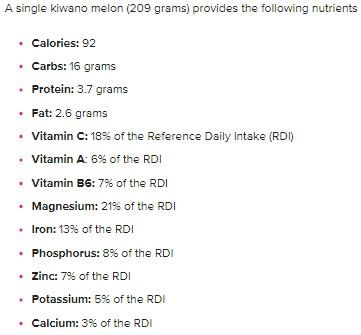
- Choose a Horned melon fruit which have a completely ripened. It'll have an orange rind along with spikes. If you can't get a fully ripened fruit, wait to get a turn orange just before eating it.
- Cut the fruit in two crosswise. Set the one half aside.
- Hold the rest of the half in your mouth. Gradually, press the fruit from the lower end. Tiny, semi-slimy sacs of fruit, each containing a cucumber-like seed, may come to the cut surface of the fruit.
- Beat or even suck up a minimum of one sac of fruit and seed.
- Chew or even suck on the sac of fruit, swallowing it once you've savored the tastes.
Medlar has abundant contorted branches which forms a dense crown. Medlar of wild varieties has branches with thorns. During autumn, leaves turns to orange or red. The flowers are produced at the end of branches. The flowers have both reproductive organs and diffuse a pleasant aroma. The flower of Medlar blossoms from April to June. Self-pollination takes place. After planting, it produces fruit in 3 years. Till the fruit is half-rotten, it is inedible.
The persimmon (sometimes spelled persimon) is the edible fruit of a number of species of trees in the genus Diospyros. The most widely cultivated of these is the Asian or Japanese persimmon, Diospyros kaki. Diospyros is in the family Ebenaceae, and a number of non-persimmon species of the genus are grown for ebony timber. The tree Diospyros kaki is the most widely cultivated species of persimmon. Typically the tree reaches 4.5 to 18 metres (15 to 60 ft) in height and is round-topped. It usually stands erect, but sometimes can be crooked or have a willowy appearance.
Description
The Fuyu persimmon is a non-astringent variety that benefits from a trifecta of qualities; it lacks a core, seeds, and tannins. Fuyu persimmons have a squat and rounded shape and are capped with an indented leaf. Fuyu persimmons boast an orange pumpkin color on both its skin and flesh. When ripe, Fuyu persimmons possess layers of flavor, reminiscent of pear, dates and brown sugar with nuances of cinnamon. Their texture varies from crisp and succulent when young, to a tender and gelatinous texture as they mature. Fruits are ready for harvest when skins are deep orange, and unlike most other persimmon types, have no astringency and are ready to eat when still firm.
Variety
There are two types of star apple:
- Astringent: Can only be eaten when it is completely ripe due to the high content of tannin. Astringent cultivars have water-soluble tannins in the flesh of the fruit at maturity (harvest) and do not normally lose their astringency until soft and ripe.
- Non-astringent: Can be eaten even in it's hard, orange stage as the tannin content is greatly reduced, the moment it turn from green to orange. Non-astringent cultivars have lost their astringency by maturity and can be eaten crisp like an apple or at various stages of softness.
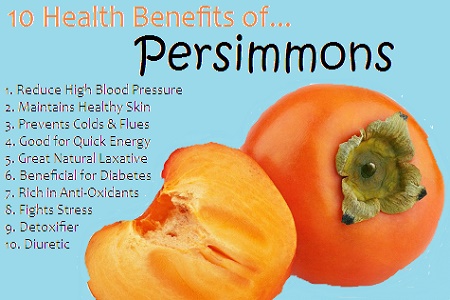
Health Benefits
- Loaded With Nutrients
- Excellent Source of Powerful Antioxidants
- May Benefit Heart Health
- May Help Reduce Inflammation
- Rich in Fiber
- Support Healthy Vision
- Delicious and Easy to Add to Your Diet

How to Eat
- Slice persimmons onto a salad for a flavorful addition.
- Top your morning yogurt or oatmeal with fresh or cooked persimmon for a burst of natural sweetness.
- Roast persimmons in the oven and drizzle with honey for a tasty and healthy dessert.
- Mix dried or fresh persimmon into muffin, bread or cake mix.
- Combine with berries and citrus fruits for a delicious fruit salad.
- Broil persimmon and serve with baked Brie for a tasty appetizer.
- Bake persimmons with chicken or meat for a unique flavor combination.
- Throw frozen persimmons into your favorite smoothie recipe for extra nutrients.
- Slice and dry persimmons in the oven to make natural fruit strips.
Fuyu persimmons are available from mid-fall through the winter months. Fuyu persimmons contain significant amounts of fiber and vitamin A. Additionally they contain vitamin C and trace amounts of vitamin E, K and B-6.
Atemoyas are round or heart-shaped, averaging from 8 to 12 inches long; some can weigh up to 5 pounds. Their skin is a pale bluish-green or pea-green, and turns more yellow as it gets riper. The skin is of medium thickness, which is composed of fused areoles that make the fruit look like a pinecone. The flesh is a snow-white color. Inside there are several large black seeds, which should not be eaten. Atemoyas tend to have fewer seeds that the Sugar Apple. The texture is similar to a firm custard, sometimes with some grittiness similar to a pear. The flavor most closely resembles a Cherimoya—pineapple, vanilla, cream, and subacidic notes.

- Cure the cold
- The fruit is rich in fiber that assists proper functioning of intestines that facilitate digestion process.
- Repel Insects
- Atemoya has Vitamin C in it which assist the body to cope with stress by lowering high stress levels, cortisol and hormones.
- Atemoya has antioxidant in it which protects the body from oxidative stress and cellular rust that could lead to various severe medical conditions such as atherosclerosis which could result stroke and heart attack.
- The fruit reduces blood pressure and lowers the chances of hypertension and serious health problems that could result high blood pressure.
- Fruit has high content of fiber which decreases sugar absorption.
- Fruit comprises many fibers which is effective for constipation. It supports intestinal functions providing the feeling of satiety after ingested.
- Atemoya has diuretic fiber and niacin which is helpful in lowering cholesterol.
- Atemoya has iron in it that helps in preventing anemia.
- The pulp has potassium that helps in lowering blood pressure.
Edible Uses
- Pulp is consumed fresh.
- Use the pulp to make sherbets, juice, yogurt, shakes and ice cream.
- Add the pulp slices to fruit cups, salads and various dessert recipes.
- Seeds have toxins in it so discard it before consuming. The seeds when damaged, the toxins may reach the flesh.
The trees produce fruit in 3-5 years. Initially the fruits are green or light green which turns yellowish green when ripened. Fruits are round or oval shaped and about 7.5 to 12 centimeter in size.
The tree is handsome, broad-topped, slow-growing, to 80 ft (25 m) in height, with furrowed trunk to 30 in (75 cm) in diameter, and black bark. The evergreen, alternate leaves, elliptic-oblong to oblong-lanceolate, tapered at both ends or rounded at the base and bluntly acute at the apex, are leathery, glossy, 4 to 12 in (10-30 cm) long. The flowers, borne singly or in groups of 3 to 7 in the leaf axils, are tubular, lobed, white, 3/8 to 5/8 in (1-1.6 cm) wide, with persistent green calyx. The fruit is bright-green and shiny at first; oblate or nearly round; 2 to 5 in (5-12.5 cm) wide; with a prominent, 4-lobed, undulate calyx, 1 1/2 to 2 in (4-5 cm) across, clasping the base. On ripening, the smooth, thin skin becomes olive-green and then rather muddy-green. Within is a mass of glossy, brown to very dark-brown, almost black, somewhat jelly-like pulp, soft, sweet and mild in flavor. In the center, there may be 1 to 10 flat, smooth, brown seeds, 3/4 to 1 in (2-2.5 cm) long, but the fruits are often seedless.
Description
Black Sapotes are round, squat fruits that look similar to a persimmon albeit a green version. The skin of a Black Sapote is initially an olive green and it will darken as it ripens and will develop the occasional black speckles. The pulp is white when unripe and turns dark brown to almost black when ripe. It has a sweet, custardy, chocolate-like flavor, which is how it got its nickname. There are somewhat large, inedible, almond-shaped seeds clustered at the center of the fruit like a pit. Typically, the fruit is purchased unripe; it can take up to ten days for it to ripen.

Health benefits
- Acts As an Immune Booster
- Helps in Digestion
- Improves Vision
- Provides Essential Minerals
- Few other minerals found in black sapote are calcium, phosphorous and iron.
- Helps in Weight Loss
Recipe
Black Sapote Mousse

- Black sapote pulp - 1 cup
- Vanilla flavoring extract - 1 teaspoon
- Powdered sugar - 3 tablespoons
- Whipped cream - 1/2 cup
Blend black sapote pulp, sugar, and vanilla extract together. Fold in whipped cream and serve chill, do not freeze.
Ripened black sapote has a greenish-yellow skin that is raw and inedible and a pulp dark brown in color and custard-like, therefore, called as chocolate pudding fruit. It is considered as a healthier alternative as it is low in fat and contains about four times as much vitamin C as an average orange. It is also a good source of fiber and potassium.
Melothria scabra, also known as the cucamelon, is a vine grown for its edible fruit. Fruits are about the size of grapes and taste like cucumbers with a tinge of sourness. This plant is native to Mexico and Central America, where it is called sandita : 'little watermelon', from sandía : 'melon'. Cucamelon is a fast-growing, tender tropical herbaceous, perennial climbing vine that can grows up to 2.5-3 m high under proper conditions. The plant prefers plenty of direct sunlight in order to grow well. Fruits are approximately 3 cm long and 2 cm wide (1.25 inch long and 0.8 inches wide) and have numerous seeds.
Description
Cucamelon is a fast-growing, tender tropical herbaceous, perennial climbing vine that can grows up to 2.5-3 m high under proper conditions. The plant prefers plenty of direct sunlight in order to grow well. The plant is found growing in sandy, loamy, clay soils and prefers rich, well-drained soil. They are drought resistant and pest-resistant relative to other cucumbers. Just like other cucumber, these plants are monoecious, producing both male and female flowers on the same plant. These plants can pollinate themselves, but the individual flowers are not self-fertile. Flowers are small, solitary yellow about four millimeters in diameter with five petals.
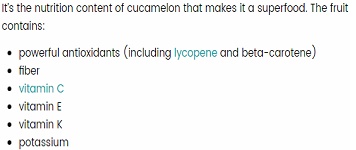
Health Benefits
- This super fruit is good for your heart, protects against aging, lowers your risk of stroke and has anticancer properties.
- Cucamelon helps to revitalize the cells, tissues as well as the different organs, thereby inhibiting the aging process.
- This fruit helps to promote the cardiac functions and also prevent development of cancer.
- The fruit has a useful antioxidant that helps to promote the functioning of the heart.
- Cucamelons are also high in potassium and Vitamin C which can lower high levels of cholesterol in our body and boost the work of the body organs.
- It offers some protection against colon cancers by eliminating toxic compounds from the gut.
- It is a very good source of potassium; it helps reduce blood pressure and heart rates by countering effects of sodium.
- Antioxidants present in the fruit helps the body prevent or at least prolong the natural changes of aging by protecting and rejuvenating cells, tissues and organs.
- Cucamelons have the power to lower down bad cholesterol levels.
- Cucamelons are also proven to be good for the eyes and every internal organ of the body.
Edible Uses
- Cucamelons can be eaten alone, pickled, used in salsa, or even placed into a drink for an added flavor.
- Cucamelons can also be used as a substitute for pickling cukes.
- Young, tender fruits are best for eating raw, while the older fruits with more developed seeds are better for pickling.
- Adding several Cucamelons to a glass of water can offer flavored water like one with added cucumber and/or lime juice.
- Mix whole cucamelons (fresh, blanched or pickled) into a bowl of olives and serve with drinks.
- They are excellent in stir-fries and can be chopped and added to salsas for extra texture and flavor.
- It promotes urination with the elimination of toxins.
- Fruits can be fried in garlic and olive oil and served as a side dish.

Recipe
Cucamelon pickles
- A large sterilized jar that you plan to use for storing your pickles.
- 2 cups of cucamelons
- 1 tablespoon of yellow mustard seeds
- 1 tablespoon of chopped fresh dill
- 1 tablespoon of coriander seeds
- 1 tablespoon of coarse salt
- ½ to ¾ cup of apple cider vinegar
- ¾ cup of water
Method
- In a pan, bring the apple cider vinegar and water to the boil and add the salt. Allow to cool.
- Put the prepared cucamelons and other ingredients in your sterilized pickling jar and pour over the cooled vinegar mixture.
- There should be enough liquid to completely cover the cucamelons. If you need more liquid, repeat step 1 with the quantity of vinegar and water you require.
- Close the jar lid tightly and let stand for 4 or 5 days.
- Your delicious cucamelon pickles are now ready for consuming.
These fruits are packed with nutrients, including powerful antioxidants. They are considered a superfood because of their many health benefits.
The fruit is a thick-skinned berry and typically measures 3–4 cm in diameter. The fruit resembles that of a slip-skin grape. It has a thick, purple, astringent skin that encases a sweet, white or rosy pink gelatinous flesh. Embedded within the flesh are one to four large seeds, which vary in shape depending on the species. Fresh fruit may begin to ferment 3 to 4 days after harvest, so they are often used to make jams, tarts, strong wines, and liqueurs. Jabuticaba is an unusual case of a fruit that grows directly on the trunk of the tree. The fruits can be eaten straight off the tree and grow to around 1.5 inches in diameter.
Jabuticaba fruit has a round shape and will turn from bright green when immature to dark purple when fully ripe giving it an appearance similar to that of a concord grape. Measuring on average one inch in diameter the tough skin of the Jabuticaba offers a tannic and resinous flavor. Within the skin is a pulpy, translucent white to rosy pink flesh surrounding one to five round and flat, light brown seeds. The flavor of the Jabuticaba flesh has been likened to that of muscadine grapes, which are known for their fruity and flowery qualities. It is a cauliflorous tree meaning that the flowers and fruits grow directly from the trunks and large branches of the tree rather than from stems. They may be found in small clusters or individually up and down the trunk of the Jabuticaba tree.
Nutrition Value and Calories of Jabuticaba


Types/Varieties
- Sabara
- Paulista
- Rajada
- Branca
- Ponhema
- Rujada
Health Benefits
- Jabuticaba contains such anticancer compounds as anthocyanins, which is believed to inhibit the development and spread of cancer cells.
- Jabuticaba has commonly been used to help treat bouts of diarrhea. When dried, crushed, and mixed with the water, the skin of the jabuticaba slows bowel movements.
- The rich antioxidant activity in jabuticaba has strong anti-inflammatory affects.
- Jabuticaba is a beneficial for those suffering from asthma.
- The antioxidants help to neutralize antioxidants that ravage the skin with age spots and fine lines. It helps in slowing aging process
- Jabuticaba is commonly used as a remedy for sore throats.
- The rich vitamin C content as well as other vitamins and minerals help to fight infection, speeding up the healing process.
Recipe
Grumichama Jelly - Jaboticaba Jelly
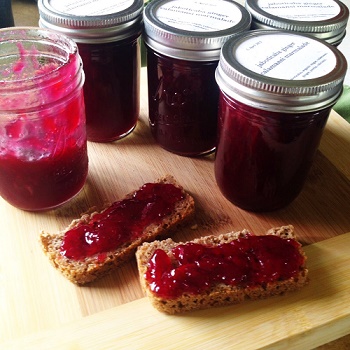
Ingredients:
- Bucket full of Grumichamas/Jaboticabas
- Sugar
- Jam setter
- Limes
Method:
Wash the fruits, and then place into a large pan and just cover with water. Bring to the boil and boil for at least half an hour to an hour. Make sure the water does not want to evaporate. And add the mixture of Grumichamas/Jaboticabas into the boiled Jaboticaba and some less sugar to taste. Cook for 5 mins and remove it from the stove once the process has been completed and add Jam setter and lime. Now the Jaboticaba jelly is ready to be served.
This tropical fruit boasts a sweet taste flavor and is unique in that it grows on the trunk of the tree from which it's extracted. At its inception jabuticaba starts off as a lovely white flower, which eventually develops into a delicious purple fruit.
It is most widely known in the Philippines. Calamansi also grows in the northern parts of Indonesia, southern China, and Taiwan. It is available year-round in the Philippines and is usually seen in its unripened green state. When left to ripen it turns a tangerine orange. is a shrub or small tree growing to 3–6 m (9.8–19.7 ft). The plant is characterized by wing-like appendages on the leaf petioles and white or purplish flowers. The fruit of the calamansi resembles a small, round lime, usually 25–35 mm (0.98–1.38 in) in diameter, but sometimes up to 45 mm (1.8 in). The center pulp and juice is the orange color of a tangerine with a very thin orange peel when ripe. Each fruit contains 8 to 12 seeds.
Nutrition chart
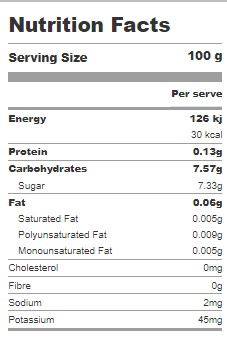
Health benefits
- Weight Loss
- Controls Cholesterol Levels
- Improves Respiratory Health
- Lowers Acidity
- Boosts Immunity
- Promotes Collagen Production
- Detoxifies the Body
- Controls Diabetes
- Prevents oral problems

Traditional Uses
- Calamondin fruits may be crushed with the saponaceous bark of Entada Phaseoloides for shampooing the hair, or the fruit juice applied to the scalp after shampooing.
- It eliminates itching and promotes hair growth.
- Rubbing calamondin juice on insect bites banishes the itching and irritation.
- It bleaches freckles and helps to clear up acne vulgaris and pruritus vulvae.
- Calamondin juice is considered as a refrigerant (being a rich source of Vitamin C) and is taken orally as a cough remedy and anti-phlogistic.
- Calamansi can help aid sore throats. You just mix one Calamansi with warm water, a pinch of salt and gargle.
- Roots are used for a traditional treatment at childbirth.
Precautions
- It shouldn't be consumed in excess during pregnancy.
- Citrus fruits like lemon and calamansi can trigger heartburn during pregnancy.
- Citrus juices may cause stomach cramps, indigestion, or diarrhea if consumed in excessive amounts.
Recipe
Vintage Calamondin Cake


Ingredients for cake:
- ½ c. + 2 Tb. calamondin puree (about 40-50 pieces)
- 1 package white cake mix
- 1 3-oz. package orange jello
- ? c. milk
- 4 large eggs
- ¾ c. vegetable oil
- 1 Tb. lemon juice
Ingredients for Glaze:
- 2 Tb. calamondin puree
- zest of 1 orange
- 8 Tb. fresh orange juice
- 2 c. powdered sugar
Method :
- Heat oven to 350 degrees.
- Beat the yolks together with HALF of the sugar and add the fruit pulp.
- Grease and flour (or use cooking spray) a large bundt pan (10" X 4" X1/2"), OR 2 single rounds, OR 12 mini Bundt pans or muffin tins.
- Slice and seed calamondins then place in a food processor and pulse several times until you have a fine puree. Set aside.
- Combine cake mix and jello in a large bowl.
- In a separate bowl, combine milk, oil, eggs and lemon juice, and ½ c. of the puree. Whisk to combine then add to dry ingredients and stir well to combine.
- Pour batter into prepared baking dish(es).
- Bake for about 40 minutes for large bundt or round pans. If using mini bundt pans or muffin tins, bake for about 20-25 minutes – check regularly to ensure they don't overcook. Remove when a cake tester comes out clean.
- Allow to cool slightly while making the glaze. After the cake(s) have cooled but are still slightly warm, remove from the baking dish (es) onto a serving platter. Spoon the glaze over the warm cake(s).
Trees start fruit production 5-6 years after planting. A 3-year old calamondin tree may yield 0.75 kg of fruits. A 6-year old tree may bear up to 5000 fruits with an average yield of 10 kg.
Morinda citrifolia also known as Noni fruit is a fruit-bearing tree in the coffee family, Rubiaceae. The fresh fruit's strong, vomit-like odor has made it a famine food in most regions, but it remains a staple food among some cultures, and has been used in traditional medicine. The noni plant is a source of antioxidants, Vitamin C, and potassium. Every part of the shrub - from leaves to roots, has been used to treat a variety of ailments. Noni contains many substances, including potassium.
Description
Noni is a small evergreen tree in the Pacific Islands, Southeast Asia, Australia, and India that often grows among lava flows. Historically, noni was used to make a red or yellow dye for clothing. It was also used as medicine, usually applied to the skin.
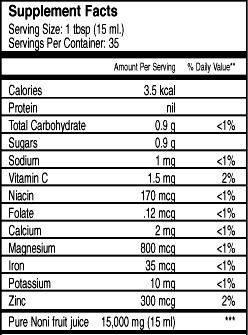
Health Benefits
- Cancer: Early research suggests that taking 6-8 grams of noni daily might improve physical function, fatigue, and pain in people with advanced cancer.
- Age-related spinal damage (cervical spondylosis).
- Improves exercise performance in distance running
- Early research suggests that drinking 4 ounces of noni juice daily for 3 months does not improve hearing in hearing-impaired women.
- Reduce High blood pressure.
- Reduces infection of parasites on the skin (leishmaniasis)
- Reduces Infections of the kidney, bladder, or urethra (urinary tract infections or UTIs).
- Reducing signs of aging.
- Reduces Nausea and vomiting after surgery.
Noni Juice Recipe
Ingredients
- 2 medium Noni fruit
- Ginger
- Lemon
- Honey
Method
- Rinse a fully ripened noni fruit with water. You want to wait until your noni fruit is ripe before you use it to make juice. When the fruit is tender and a translucent yellow color, it's ripe. If your noni fruit is hard and a green or white color, it's not ripe yet.
- Cut and Blend the noni fruit and ginger in a blender with 1 cup (240 mL) of cold water. Blend the fruit and water until they are well blended into a thick juice.
- Pour the blended noni juice into a sieve placed over a bowl.
- Add honey, suger, or fruit juice to your noni juice if you don't like the taste. Honey and fruit juice will sweeten the noni juice, ?? Serve chilled
Precaution
- Do not take noni if you are pregnant. Historically, noni has been used to cause abortions. It is also best to avoid noni if you are breast-feeding.
- Noni contains large amounts of potassium. This can be a problem, especially for people with kidney disease.
- Drinking noni fruit juice might increase potassium levels and make them even higher in people with already too much potassium in their body.
- Noni has been linked to several cases of liver damage. Avoid using noni if you have liver disease.
Noni contains many substances, including potassium. Some of these substances might help repair damaged cells in the body, activate the immune system, and have other activities.
Arazá is a fruit tree, originating in western part of Amazonia. Less frequently species may be found also in Bolivia, Brazil, Colombia. It is exotic to other tropical areas in South America, Central America and Florida. This climacteric fruit contains a high level of acidity, averaging pH 2.4 for the juice, and that confers to it a good quality for processing. Moreover, it contains a high level of nitrogen and potassium.The dry weight contains 8-10% of proteins, 5–6.5% of fibre, 65–72% of other carbohydrates and a small amount of calcium, 0.16–0.21%,10-12ppm of zinc and also some phosphorus, potassium and magnesium.
Nutrition chart and value
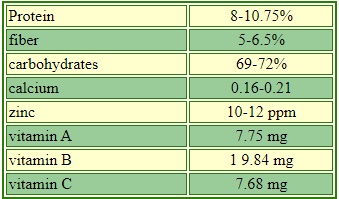
Edible Uses
Araza is a wonder from the Amazonas and it has several uses. At present, it is cultivated on small properties throughout the basin of the Solimoes, as part of the complex mosaic of crops, but not as a commercial crop. Given the fact that, the fruit is very high in acidic for direct consumption, it can be processed into other forms like marmalades, juices, jellies, nectars and syrups to have an exotic and refreshing taste. They are also consumed as smoothies and it plays a vital role in ornamental purpose as well. Since it has a tart flavor, you can add sweet fruits like mango or banana while making smoothies. Yogurt and honey are other options available to you.
Health Benefits
- Control blood pressure.
- Prevent from cancer
- Slows aging process
Araza Jam Recipe
Method
- Clean fruit and remove inner flesh and seeds. Cut into smallish chunks, about 1 inch long by 1/2 inch wide. Measure by weight or by volume. Place in pot. Araza is a very juicy fruit and doesn't need water added. It does need sugar. I use 60% sugar by weight, for example I use 5 lbs of fruit and 3 lbs of sugar. Put on stove and heat, stirring until sugar is dissolved. Bring to a nice low boil.
- Araza, and many other fruits, will produce a foamy froth in the initial stage of the cooking process. This froth will discolour the finished jam and I always remove it with a spoon. But keep it! It is excellent in cookies or for baking and one can make sorbet with it. Put the froth in a glass and when it cools a little some juice will settle to the bottom, pour this back into the jam.
- At some point, perhaps 15 minutes after you begin, the froth will stop and the texture of the jam will change. The boil will not be so asctive as the mixture begins to thicken. The characteristic plop plip sound of bubbling jam will be heard. The colour will begin to deepen too. Turn the heat down, and stir more frequently. Certainly not a time to go out into the garden to water the tomatoes. After 7 minutes or so, begin to test the jam on a metal spoon. You are looking for a skin to form on the surface.
- If the jam on the ladle is forming even the slightest of skins, turn off the heat and wait for a minute or two: a skin should form on the surface of the pot
- The jam is now ready and can be ladled into freshly boiled (for 10 minutes)jars. Fill to within a half inch of the top, carefully clean the rim and outside edge of the jar, screw on the freshly boiled jar lid and set aside.
Due to it's nutraceutical like properties it has some pretty impressive skin loving benefits; like reversing the visible signs of aging and boosting collagen production.
Melicoccus bijugatus, also known as spanish lime is a fruit-bearing tree in the soapberry family Sapindaceae, native or naturalized across the New World tropics including South and Central America, and parts of the Caribbean. Its stone-bearing fruits are edible. It is native to northern South America and naturalised in coastal and dry forest in Central America, the Caribbean and parts of the Old World tropics. The fruit ripens during the warm summer months. Trees can reach heights of up to 25 m (82 ft) and come with alternate, compound leaves. The fruit is a round drupe, approximately 2–4 cm (0.79–1.57 in) in diameter, with a thin, brittle, green peel. The bulk of the fruit is made up of the one (or, rarely, two) whitish seeds, which are surrounded by an edible, orange, juicy, gelatinous pulp.
Health Benefits
- Has lot of vitamin A which helps to promotes healthy eyes
- Promotes Good Sleep
- Improves your urinary system
- Lowers Blood Pressure
- Stabilizes your mood
- Prevents Anemia
- Builds up your immune system
- Helps weight loss
- Maintain healthy digestive system
- maintains healthy bones and teeth
- Anti-Diabetic
Nutritional Value

- It is made into jam, marmalade, jellies or beverages and the peeled fruit can be boiled to make a cold drink.
- Seeds are said to be edible after roasting.
- The juice can be cooked to make simple syrup and used in various sauce, desserts and jelly.
- Fresh fruit juice also can be added to cocktails.
- Spanish lime can be used to make simple syrup that can be used in desserts and drinks.
- Seeds are said to be edible after roasting.
- Spanish lime is best eaten fresh, out-of-hand.
Medicinal Use
- Pulverized, roasted seed kernels and a decoction of bark or leaves are used for dysentery and intestinal disorders.
- Tea made from young leaves is used in the Dominican Republic to reduce fever.
- Leaves of the Spanish lime tree can be boiled and made into a tea which is great for intestinal problems.
- Seeds are roasted, crushed and combined with honey as an antidote for diarrhea.

Spanish lime juice recipe
Ingredients
- 2 kg of fresh guineps washed
- 1 litre of water
- Sweetner to taste I used coconut nectar low GI, can use agave, maple syrup
Method
- Use a paring knife to make a slit in each guinep and remove from their skin
- Place the skinless guineps in a large bowl and pour the water onto the fruit.
- Allow the fruit to soak for 10 minutes so the pulp lifts with ease.
- Using clean hands start to rub the pulp of each guinep to release. Don't worry if there's still some pulp on the seed, the recipe will still work given the volume of guineps used.
- Using clean hands start to rub the pulp of each guinep to release. Don't worry if there's still some pulp on the seed, the recipe will still work given the volume of guineps used.
- Stir in the desired amount of sweetener, refrigerate and serve with ice.
Precautions
- Unripe fruits are poisonous.
- Since the juice from the fruit can stain the clothes, we should peel the skin carefully.
- We should take cautions on the big seeds too, since it can cause choking hazards in children.
It is actively planted as an ornamental, shade tree, and honey-plant. Flower nectar allows the production of an appreciated dark, flavored honey. The wood is valued for rafters, indoor framing and cabinetwork. Extracts from the leaves are used in South America to kill flies and repel sandflies.
It belongs from the cashew fruit family. Also known as jocote or hog plums, ciruela are about the size of a kiwi. They have a very sweet flesh when ripe and taste similar to a nectarine with mango or citrus. Originally found in Mexico and as far south as Brasil, jocote fruits are now grown in many places including the Philippines and Nigeria. Ciruela is known to help with digestion and help acid reflux amongst other ailments. It is high in fibre and vitamin C as well as other antioxidants.
Ciruela fruits are small in size, averaging 2-5 centimeters in diameter, and are elongated, obovoid, to oblong in shape. The fruits are found growing individually or in small groupings, and the smooth, thin, waxy, and shiny skin is green when young, transforming to yellow or bright red when mature depending on the variety. Underneath the skin, the yellow pulp is firm, acidic, and sour when unripe, and sweet, soft, and juicy when ripe. There is also a large white seed tightly adhered in the center of the flesh that is inedible, bitter, and fibrous. Ciruela fruits are delicate and tender and have an astringent, sweet, plum-like flavor.
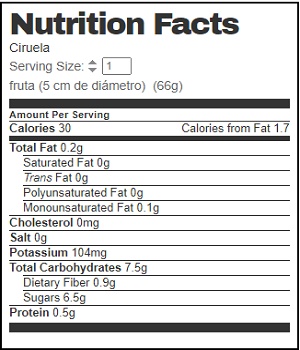
Uses
Ciruela fruits are best suited for raw applications as their tart and sweet flavor is showcased when used fresh, out-of-hand. Unripe fruits have a very astringent taste and are coated in lime juice, salt, vinegar, or sugar to help balance flavors. They can also be chopped to make a green sauce. When ripe, Ciruela fruits have a sweeter flavor and are consumed fresh as a snack, similarly to plums and mangoes, discarding the stone. The ripe fruits can also be blended into juices and fruit drinks, boiled in sugar to create a sweet syrup and topped over ice cream, cooked and juiced to make preserves and jellies, or dried and preserved for extended use. In the Philippines, Ciruela fruits are cooked into sinigangs, a sour soup with cooked meats, and are also used in kinilaw, which is a raw dish that consists of seafood, vegetables, and juices. The fruits will keep 3-5 days when stored in a plastic bag in the crisper drawer of the refrigerator.
Have medium calorie density - this means that the amount of calories you are getting from an ounce is moderate (0.05 cal/oz). Rich in vitamins and minerals (12.3%/cal) - a good source of Vitamin K. Contain a moderate amount of risky components that may include saturated fat, sodium and sugars (0.02%/oz). Good source of fiber (11% of DV/100g).
Theobroma grandiflorum, commonly known as cupuaçu, is a tropical rainforest tree related to cacao. It is cultivated in the jungles of Colombia, Bolivia and Peru and in the north of Brazil, with the largest production in Pará, Amazonas and Amapá. Cupuaçu trees usually range from 5–15 m (16–49 ft) in height, though some can reach 20 m (66 ft). They have brown bark, and the leaves range from 25–35 cm (9.8–13.8 in) long and 6–10 cm (2.4–3.9 in) across, with 9 or 10 pairs of veins. As they mature, the leaves change from pink-tinted to green, and eventually they begin bearing fruit.
Nutrition Value
Apart from their taste often compared to chocolate, banana, melon or bubble gum, cupuassu is a good source of nutrients, vitamins and minerals. Consuming 13.6 gram of cupuassu oil offers 13.6 g of Total Fat and 0.08 mg of Vitamin E.

Health Benefits
- Cupuassu is very rich in antioxidants and it is even regarded as a full breakfast among people in South America.
- The fruit has the comparable flavor of cocoa, that's why it is utilized in making jams, jellies, and breads.
- It contains no caffeine and thus, it is capable of keeping the body hydrated and moisturized.
- The fruit is an abundant source of vitamins A, C, B1, B2, and B3. In addition, it is great for the bones, ligaments, and tendons as a result of its high amino acids content, as well as calcium and selenium.
- Phytonutrient polyphenols are present in cupuassu, but not in many other fruits. This compound is extremely helpful in the treatment of respiratory illnesses.
- The fruit helps combat free radicals- the reason behind cancers and other life-threatening problems.
- It helps maintain the body's cholesterol at normal levels and prevents the occurrence of cardio-related problems.
- The fatty acids present in Cupuassu, help reduce bad cholesterol and keep the good cholesterol, carrying, extremante beneficial in maintaining a healthy heart.
- Cupuassu aid in healthy weight loss, addition of vitamins and minerals, so-called fruit contains soluble fiber pectin, which aids in weight loss, because it produces a sociogenic effect, found in many anti-obesity drugs.
- Cupuassu leaves have soothing action, combat bronchitis and kidney infections.
- The Cupuassu has a great advantage for health, as it helps to fight free radicals; they are the main responsible for various cancers.
How to eat
- The delicious fruit pulp is eaten raw or prepared into a wide variety of beverages, juices, ice cream, yoghurt, sorbet, preserves, sweets, jams, jellies, puddings and other desserts.
- Seeds have a high amount of fat and provide a good cocoa butter and can be used to produce chocolate and chocolate-like foodstuffs.
- Cupuassu can replace cocoa in many day-to-day foods, especially for children, such as chocolate milk.
- Cupuassu seeds can be made into cupulate, which looks and tastes just like chocolate but is cheaper and more resistant to heat.
Other Facts
- The timber is commonly used for construction and joinery.
- Brazil declared Cupuassu to be the national fruit and the name to be ineligible for trademark.
- Cupuassu is available in many forms: shampoo, lotion, butter, ice cream, as a juice, as straight pulp, or even as the fruit itself.
- Cupuassu is called "the pharmacy in a fruit" because of its nutritional value and the effectiveness in curing and preventing sickness.
- It is also cosmetic products such as body lotions which reduces the signs of aging and makes you look younger.
- Seeds are used in making cupuassu butter- one of the world's newest skin-softeners.
Precaution
Cupuassu is generally safe for most adults when consumed in moderation.
While the theacrine content of a single serving of cupuassu may not provide the same stimulating properties as caffeine in a cup of coffee, those who are sensitive to stimulants, or who are on medications that may be stimulating (such as anti-depressants), should use caution and consume cupuassu in small amounts at first to see how they respond to it.
The pulp of the fruit is very fragrant and smells like banana. Cupuassu looks like a cross between a papaya and coconut. It has an aromatic and buttery pulp with approximately 35 hazelnut-sized seeds. As a cousin of the cacao fruit, cupuassu has a prized tropical flavor combining elements of chocolate, bananas, pear, passion fruit and pineapple.
Peach palm is a tall, elegant, usually spiny but occasionally spineless, palm bearing large clusters of nutritious, palatable fruit. It is considered native to the Amazon River basin and has spread northward from Bolivia to Costa Rica and Honduras. It is called "pupunha" in Brazil, and Arkcoll (1983) lists 11 synonyms from seven countries. Several additional synonyms are known. Peach palm fruit is borne in clusters weighing 7–22 lb. The largest fruits may have a diameter of 21/2 in. Peach palm fruits range in color from green to yellow, Orange, or red.
Description
The typical 18-metre (60-foot) mature peach palm bears up to five clusters of 50 to 80 orange-yellow fruits, each of which is 5–7.5 cm (2–3 inches) in diameter. The fruit keeps well on the tree and after it is harvested. The 2-centimetre (1-inch) seed is conical with a black, thin, hard shell. The subtle flavour of the white inner kernel somewhat resembles that of the coconut, hominy, or roasted chestnut.
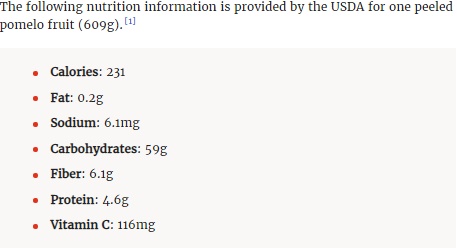
Health Benefits
- Peach palm has high content of starch which makes it effective for providing good energy.
- Children with actively growing require a supply of energy for enhancing metabolism and consumption of peach palm is an effective to get some calories.
- An intake of peach palm assists speed up recovery after debilitating illness and even after surgical operations.
- Consume peach palm to add strength to the vision. It has vision strengthening ability which attributes rich content of Vitamin A and provides more than 1490% of daily recommended allowance for this vitamin in a serving of 100 grams. This vitamin is essential to relieve dryness of eye and its deficiency results to night blindness.
- Peach palm has high content of Vitamin A and significant amounts of Vitamin C as well as other antioxidants that helps to boost the immune system of the body.
- Peach palm has antioxidants that help in preventing cancer by interrupting the free radical activities which results to cancerous growth when associated with other body cells.
- Peach palm has significant amount of fiber that helps diabetic patients by preventing spike in blood sugar level and also stimulates insulin secretion.
- Fiber is a crucial non-nutritive component found in foods. It offers numerous health benefits. The activity helps to protect the heart by absorbing excess cholesterol from the body.
- Peach palm has high content of Vitamin C and Vitamin A and the healthy balance of fluid helps to maintain skin health. These vitamins assist re-growth of new skin cells. It also protects the skin cells in the body.
- Peach palm fruit lowers the possibility of atherosclerosis. It stimulates blood stream to eliminate LDL and triglycerides. Moreover, it promotes the number of HDL inside the blood. It prevents the effect of atherosclerosis and stroke disease.
Edible uses
- Fruits are boiled in water or salted water or roasted and the cooked mesocarp is consumed.
- Mash the cooked mesocarp and ferment for 1 to 2 days then add water to fermented mash for making drink for breakfast and other times.
- Eat the cooked fruit with salt or honey and use it for making compotes and jellies.
- Use the flour derived from the pulp for making soups, noodles, pastas, tortillas, infant formula, cakes and other confectionery.
Peach palm has been utilized as shade tree in coffee and cacao plantations. The wood from the trunk is used to manufacture building materials such as parquet, panels; luxury furniture; spears, bows, arrows, harpoons, fishing poles, bed-boards, hammer handles, siding for houses, beaters and spindles for weaving, carvings and other handicraft items, taking advantage of its beauty, great strength and elasticity. Unused leaf and stem parts can be used to manufacture paper, organic fertilizers and animal food supplement.
Pomelo are native to the Malay Peninsula, probably Thailand and Malaysia, from where they spread north to China. Pomelo fruits are large and usually, but not always, thick skinned. Pomelo vary in shape and may be round, oblate, or pyriform. They also vary in size. The largest fruits may weigh as much as 6 lb. Pomelo are a good source of vitamin C, and the best varieties have up to 15 percent soluble solids. Pomelo are primarily a high quality dessert fruit for fresh consumption.
Health Benefits
- Strengthen immune system
- Supports digestive health
- Normalize blood pressure
- Lower cramps
- Slows down aging
- Healthy teeth
- Stronger bones
- Assist to lose weight
- Prevent cancer
- Heal wounds
Types of Pomelo
- White Pomelo:Belonging to the Citrus Grand is family; the Israeli variety of the Pomelo is actually a exclusively huge fruit, described as huge juice saccules, extremely thicker peel, sweet pulp as well as exclusive odor. White pomelo is usually offered as treat which will help in the digestion of food. The Pomelo is collected in between mid-October as well as mid-May.
- Red Pomelo: Red pomelo has got softer as well as thinner-skinned variety. The Red Pomelo is good, tangy, as well as sour, compact along with pink pulp along with a a little more compacted design. This massive citrus fruit, abundant with vitamin c as well as potassium, is really an indigenous of Malaysia and is also thought to be the ancestor of the grape fruit. The Israeli-grown Red Pomelo ripens in between September as well as January.
- Pink Pomelo: Pink pomelo consists of numerous seeds and is also so sweet as well as juicy. The pink pomelo can also be regarded as the remedy for stomach or even the intestinal worms.
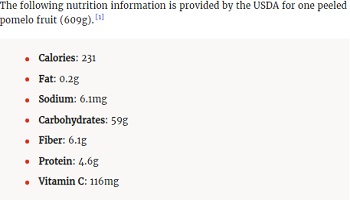
Traditional Uses
- Decoction prepared from hot leaf is applied for ulcers and swellings.
- Seeds are useful for dyspepsia, coughs and lumbago.
- Juice extracted from fruit is used for ulcers, diabetes and mix with rock salt and black pepper for malaria.
- Fruit pulp is used as a stomach tonic and appetizer.
- Leaves are used for treating chorea, epilepsy, convulsive cough and stomach pain caused due to indigestion.
- Rinds are used as a sedative in nervous affection, vomiting, diarrhea, griping of abdomen, eye troubles and headache.
- In Malaya, painful swellings are treated with the lotion of boiled leaves.
- Boil four slices of pomelo without peel with 12 grams of astragalus and drink this mixture two times a day to provide relief from cough.
- Prepare pomelo and rice like a soup and take it three times in a day to provide relief from abdominal pains and indigestion.
- Boil 3 to 10 grams of dried pomelo leaves and drink it once a day to treat diarrhea.
- Apply the drops of crush fresh pomelo leaves to the infected ear by curing ear infections.
Precautions
- This fruit is rich in potassium and Vitamin C which is harmful for the patients with kidney and liver problems.
- The hypotension patients should avoid it because pomelos reduce the blood pressure considerably.
- Limit an intake of pomelos because excessive consumption could result to various health problems.
- If consumed excessively it results constipation and formation of kidney stones.
How to Eat
- Ripe and sweet pomelo is consumed fresh or made into juice, marmalade and beverage.
- An essential oil could be extracted from peel and used as a flavoring agent for sweets, chewing gum, soft drinks, ice cream and baked goods.
- In Southeastern Chinese cuisine, pomelo juice is used to add flavor to desserts and soups.
- Skinned segments are used in desserts, salads and made into preserves.
- Dried or fresh rinds are used as an ingredient in soup and cooking meat stews.
- The fruit pulp is also used to prepare jellies, jams and syrups.
Recipe
Vietnamese Pomelo Salad
Ingredients
- 240 grams of large shrimp (peeled & deveined)
- 1 carrot (peel and cut into tiny pieces)
- 2 tablespoons of crispy caramelized shallot
- 2 tablespoons of chopped cilantro (leafy tops only)
- 120 grams of chicken breast (boneless, skinless)
- 1/4 cup of chopped macadamia nuts
- 1/4 cup of chopped mint leaves
- 1/2 teaspoon of salt
- 1 medium pomelo
Method
- In a small saucepan, put salt and fill about 2/3 of it with water. When the water starts to boil add shrimp. When they becomes curled up, remove them with the use of slotted spoon and set it aside to cool down
- Again boil the water and add chicken. Turn off the heat when the bubbles form at rim. Cover it and let is remain for about 20 minutes to cook flesh. Then remove and set it aside to cool.
- Cut shrimp diagonally into large pieces so that it will blend well with other ingredients and pomelo. Speck the chicken and set it aside.
- Cut the ends of pomelo then cut off skin as well as pith to expose pinkish flesh. Use knife, scissors or fingers to peel the flesh from its skin. Separate flesh into bite sized pieces and put it in a bowl.
- For dressing, mix lime juice, fish sauce, sugar, water, chile and garlic in a small bowl. Stir it to dissolve sugar.
- Add chicken, shrimp, mint, carrot, macadamia nuts, cilantro, mint and fried shallot to pomelo. Toss it with fingers to mix it well. Toss by adding dressing.
- Adjust the flavors as need. Put it to a plate leaving liquid behind and then serve.
This type of citrus fruit is closely related to grapefruit and has many similarities in terms of taste, texture and appearance. Like other citrus fruits, it is highly nutritious. Each serving is low in calories but high in fiber, vitamin C, copper and potassium, along with several other micronutrients.
Originating in Brazil, Paraguay and Argentina, this exotic fruit is actually a very large berry that can either be purple or yellow. Also known as the maracuja (Spanish) and lilikoi fruit in Hawaii, passion fruit is now cultivated around the world and used in everything from fruit juice to ice cream. The fruits are small with a gelatinous seedly centre and are high in polyphenols, beta carotene and vitamin C. Despite its small size, it's rich in antioxidants, vitamins, and plant compounds that could benefit your health. Passion fruit contains a lot of antioxidants. In particular, it's rich in vitamin C, beta carotene, and polyphenols.
Description
The fruit is green when young turning to yellow, greenish-yellow or purplish as they mature. The fruit has tough outer rind which covers firm, juicy meat along with abundance of seeds. Fruit normally weights in between 35-50 g. Seeds are numerous, elliptical, small, hard, dark-brown or black, pitted, approximately 2.3 mm long, with transverse striae.
Types of passion fruit
- Purple Passion Fruit
- Yellow Passion Fruit
- Sweet Passion Fruit
- Giant Passion Fruit
- Banana Passion Fruit
Health benefits

- Prevents Cancer
- Improves Bone Health
- May Help Reduce Inflammation
- Younger looking skin
- Treats Insomnia
- Aids Digestion
- Weight Loss
- Improves Circulation
- Soothes Respiratory Conditions
- Reduce the Risk of Arthritis
- Cardiovascular Health
- Good for Eye health and Vision
- Helpful in Curing Anemia
- Boosts Immunity
- Maintain the Healthy Hair
- Reduces Blood Pressure
- Relieves Asthma
Precautions
- Excess Consumption of Passion Fruit is Dangerous for Diabetes Patients
- Contained Sedative Properties
- Passion Fruit might Interact Negatively Toward some Drugs
How to Eat
- To eat this tropical fruit, you need to slice or rip open the rind to expose the colorful, juicy flesh and seeds.
- When they are open, the seeds are edible, so you can eat them together with the colorful flesh and juice.
- Drinks: It can be squeezed through a sieve to make juice, added to cocktails or used to make a cordial to flavor water, like this.
- Desserts: It is often used as a topping or flavoring for cakes and desserts, like this cheesecake or this mousse.
- On salads: It can be used to add a crunchy texture and sweet flavor to salads like this one.
- In yogurts: Mix it with natural yogurt to make a delicious snack.
Edible Uses
- Passion fruit is used to make fruit juice and is commonly eaten as a whole fruit in East Africa.
- Passion fruit is used to prepare desserts such as passion fruit mousse, cheesecake, ice cream, and to flavor yogurts and cocktails in Paraguay.
- Passion fruit juice, along with faluda, is one of the most popular refreshments in Sri lanka.
- Passion fruit is also favored as a jam or jelly, as well as butter.
Edible oil is obtained from the seed. With its very attractive flowers, it is also desirable as an ornamental or garden plant for homes around the world with suitable climate.
Miracle fruit, also known as miracle berry. The reason this West African berry is called a miracle is that after having one you can eat an onion and it will taste like an apple. It also makes sour foods, like lemons or grapefruits taste quite sweet due to the presence of miraculin. While it only has small traces of vitamin A and C, it is a great sweetener. Each fruit contains one seed. It has been used as a sweetener and flavoring agent for diverse beverages and foods, such as beer, cocktails, vinegar, and pickles.
Description
Miracle fruit is an ovoid to oblong berry, 2–2.5 cm long and 1 cm wide, finely pubescent, with a persistent protruding style. They are normally green while young turning to bright red when ripe and contain a single dark brown ellipsoid seed enclosed by the white fleshy translucent, insipid pulp. Miracle berry has mildly sweet flavor and is bland in taste. Although Miracle berries are tasteless, this fresh fruit can trigger citrus foods like limes and lemons to taste sweet. It consists of glycoprotein particles known as "miraculin".

Types of Miracle Fruit
- African Based Fruits
- Indian Based Fruit
Health Benefits

- Miracle for diabetes
- Weight loss
- Improves well-being
- Change the horrible taste of certain medicines
- Treats cancer
- Great health supplement
- Chemotherapy
- Effective food enhancer
- It can be used for "sweetening" palm wine, sour fruits and other drinks or food.Fruit pulp is used to sweeten palm wine in tropical West Africa where this species originates.
- It is also used to improve the flavor of soured cornbread.
- Berries are eaten fresh.
- It was used to improve the flavor of soured cornbread.
- Leaves have been used for heartburn, indigestion, poor appetite, diabetes, and high blood pressure
Precautions
- Mechanism of Action
- Too Much of a Sour Thing
- Caution for Children
- Lasting Too Long
The plant is planted as a garden plant. Limes, lemons, and even vinegar, taste completely transformed into sugary treats and fruit juice. Fruit can make sour and bitter foods taste sweet – and the sensation lasts for up to two hours after eating.
This citrus fruit is also known as a naranjilla in some areas. It is grown in Ecuador, Panama and Colombia but there hasn't been much success cultivating it in order areas of the world. The lulo fruit have a citrus tang similar to rhubarb mixed with lime and grow best in partially shady areas. It is also turned into wine in Colombia and used for ice cream. It is a nightshade fruit, so those who have allergies to nightshades (e.g. eggplant, tomatoes, gogi berries) should not eat them. Lulo is high in vitamin A and C as well as potassium.
Description
Naranjilla is actually globose, round or round-ovate shaped fruit, 1–4 per inflorescence, 2 1/2 in (6.25 cm) across and contains 4 compartments separated by membranous partitions and filled with translucent green or yellowish, very juicy, slightly acid to acid, pulp of delicious flavor which has been likened to pineapple-and-lemon. Fruit is normally brownish-green while young turning to orange when completely ripe. Skin is normally smooth leathery, thick peel which encloses light yellow-orange flesh and juicy green pulp with small, thin seeds.
Nutritional Value

Apart from their citrusy taste, Naranjilla is a good source of nutrients, vitamins and minerals. Consuming 120 gram of naranjilla offers 17.5 µg of Vitamin K, 1.74 mg of Vitamin B3, 0.128 mg of Vitamin B6, 0.9 mg of Vitamin E, 7.08 g of Carbohydrate, 0.264 mg of Vitamin B5, 0.42 mg of Iron, 240 mg of Potassium, 34 µg of Vitamin A and 0.054 mg of Vitamin B1.
Health Benefits

- Cancer Prevention
- Improves Digestive Health
- Lulo Boosts Immunity
- Improves Cardiovascular Health
- Prevents Diabetes
- Improve Eyesight
- Helps to Strengthen your Bones
- Improves Blood Circulation
- Detoxifies your Body
How to Eat
- Ripe naranjillas, freed of hairs, can be eaten out of- hand by halving the fruit and squeezing the contents into the mouth or scooping with a spoon and ingesting the flesh.
- Ripe flesh with embedded seeds, may be scooped out and added to ice-cream mix, made into a sauce for numerous native cuisine or used in pies and other cooked desserts.
- Empty fruit hulls can be stuffed with a mixture of mashed bananas and other ingredients and baked.
- In its native countries, lulo is mostly and popularly used for its delicious and nutritious juice ' jugo de lulo' , in particular refrescos or naranjilla smoothies, made by blending the flesh then strained, sweetened and served with ice-cubes.
- Sherbet is also prepared by mixing strained naranjilla juice with sugar or corn syrup, water, a dash of lime juice, then partially freezing followed by blending to froth and freezing again.
Precautions
- People with very sensitive skin may find the hairs on the fruits irritating and should protect the hands when rubbing off the fuzz.
Naranjilla is used as a source for Solanum hybridization and breeding work.
Korean melons are suspected to have originated in India then later made their way to China via the Silk Road. It is also thought that some varieties may have been a result of wild melons growing in ancient China. The Korean melon plant is drought tolerant providing it is grown in moisture retentive soils. In China the Korean melon is known as Huangjingua or Tian Gua, in Japan as Makuwa, in Korea as Chamoe, in France as Cantaloup Du Japon and in Vietnam as Dura Gan. In Korea the melon is made into a pickle known as chamoe jangajji. Sun Jewel melons are rich in vitamins A and C. Like most melons, they are a rich source of natural hydration comprised of up to three-quarters moisture.
Health Benefits
- Lowering Cholesterol Level
- Great for Weight Loss
- Managing High Blood Pressure
- Natural Solution to Constipation
- Excellent Source of Vitamin C
- Contains Anti-Cancer Properties
- Promote Healthy Bones
- Reduces the Risk of Kidney Stones
- Prevents Stroke
- Hydrated Body

How to Eat
- Slice off the top and bottom of the melon.
- Peel the skin from the melon with a large paring knife or vegetable peeler.
- After the skin has been fully removed, cut the melon in half lengthwise. At this point, you can either leave the seeds as they are or scoop them out, depending on your preference.
- Cut the melon lengthwise into slices. If you're using them in a fruit salad or want smaller pieces, you may cube the slices into bite-sized pieces.
Precautions
- As it is very sweet, those who have been diagnosed with diabetes are wise to avoid this type of fruit.
- Though this fruit is basically great for weight loss but you should be careful in combining it with other fruits or additional sweetener because instead of weight loss, you will gain more weight.
- As for serving tips, is better to consume Korean melon within 5 days after you buy it before the flavor is changing.
Korean melons are also delicious additions to green salads or fruit salads or wrapped in prosciutto and served as an appetizer. Much like their distant cousin, the cucumber, they make great pickles as well.











